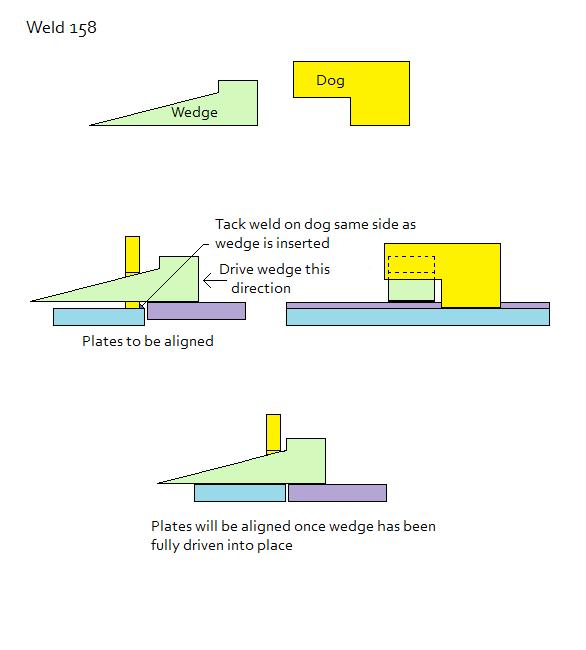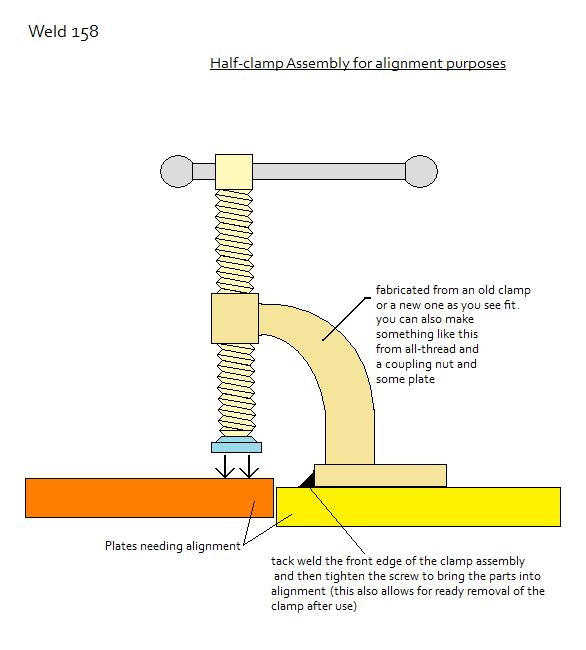Here is another small variation of a similar type of application. This involves a piece of angle iron, pipe, sq. tubing, or a lot of other structural shapes that can be substituted and used in a similar fashion. As before, be sure that the material/project that you are working on allows for this sort of tacking and welding other than the specified welds.
As in my other post, once you have tacked your parts into position simply break off the angle piece and grind/sand to acceptable condition.
Best regards, Allan
The use of hydraulic bottle jacks that work in all positions - horizontal or vertical can be used to spread and/or tighten root openings. Use the same principles of the wedge and dogs but use the jacks with angle, beam or channel and fabricate frames to push or pull for fitups.





